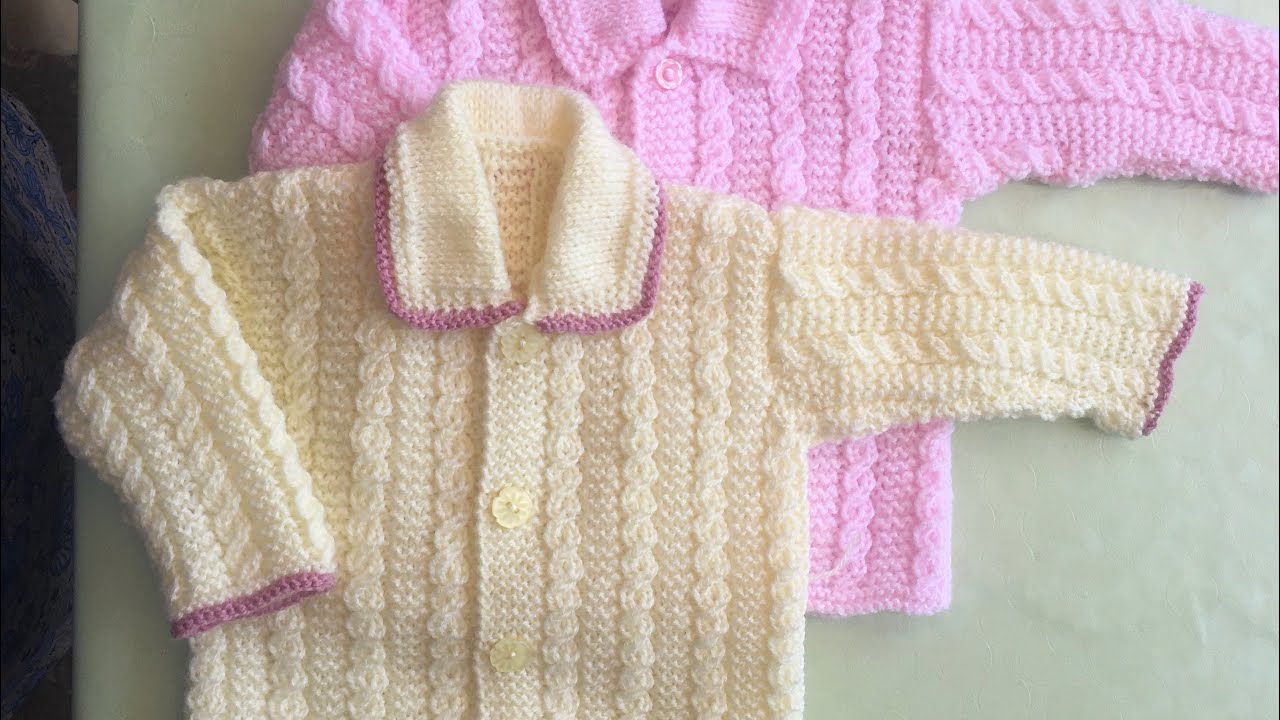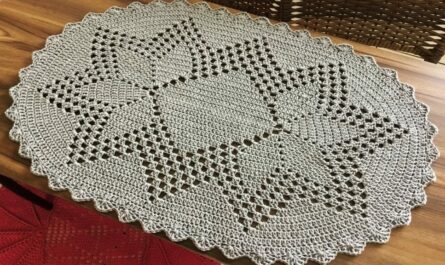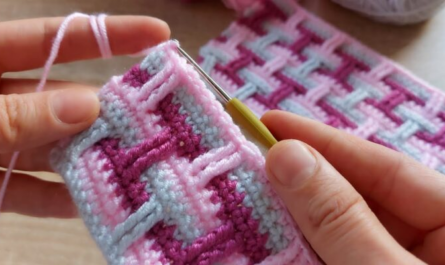There’s nothing quite as timeless and endearing as a hand-knitted baby cardigan. For a newborn aged 0-3 months, this classic garment is an absolute essential, offering adaptable warmth, easy layering, and an undeniable touch of adorable charm. Its full front opening makes dressing a tiny, often floppy, newborn a breeze, which is a huge bonus for new parents. While it might seem daunting to knit a garment, a baby cardigan for this size is a wonderfully achievable project for confident beginners or intermediate knitters, yielding immense satisfaction.
This detailed article will guide you through the process of knitting a beautiful and practical baby cardigan for a 0-3 month old, covering essential considerations, popular construction methods, key design elements, and valuable tips for success.
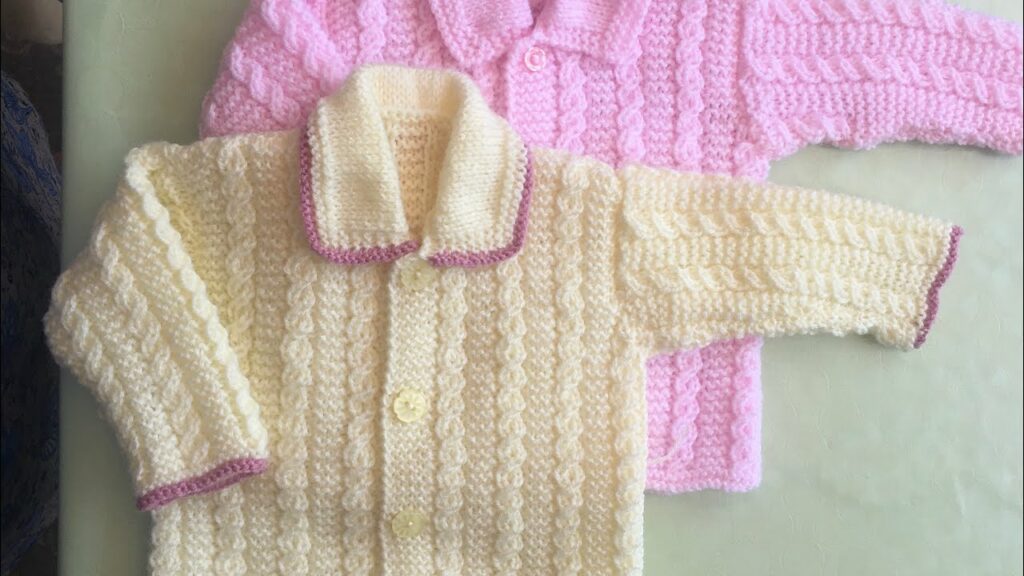
Why Knit a Baby Cardigan for 0-3 Months?
- Layering Essential: A cardigan is the perfect versatile layer. It can be popped over a onesie, a sleeper, or a little top for instant warmth, and easily removed if the baby gets too warm.
- Temperature Regulation: Newborns are still learning to regulate their body temperature. A knitted cardigan provides adaptable warmth, keeping them snug without overheating.
- Practicality Personified: The full front opening with buttons makes dressing a newborn significantly easier than pulling a sweater over their delicate head.
- Adorableness Factor: Tiny knitted cardigans are universally cherished. They look precious in photos and are a testament to the love woven into every stitch.
- Perfect Gift: A hand-knitted cardigan is a profoundly thoughtful, practical, and cherished gift for baby showers, gender reveals, or welcoming a new arrival.
- Skill Building: For knitters, this project teaches fundamental garment construction techniques: shaping a yoke, knitting a body and sleeves, creating neat button bands, and working buttonholes.
- Quick Project: Given the small size, a 0-3 month cardigan works up relatively quickly, offering satisfying progress and a tangible finished object in a reasonable timeframe.
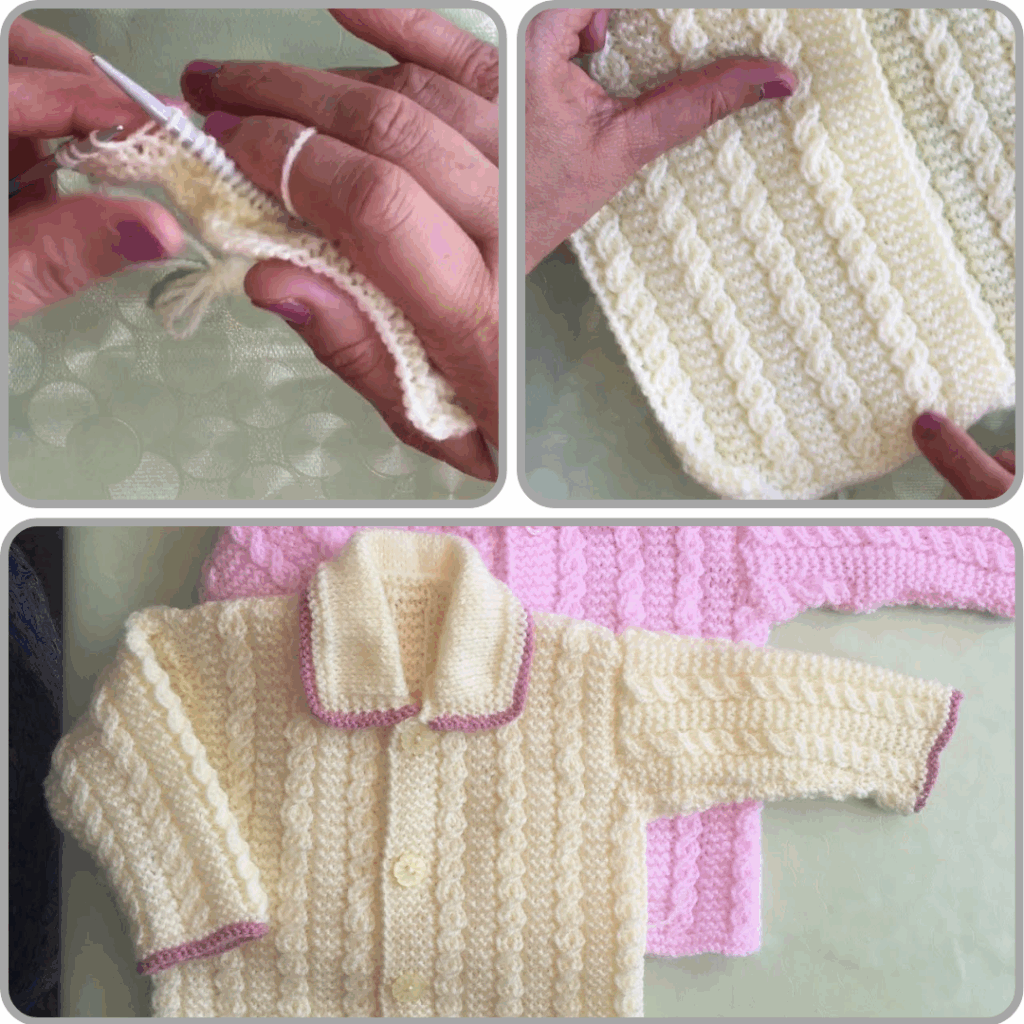
Key Considerations for Design & Yarn (0-3 Month Specifics):
When knitting for the tiniest of humans, every detail counts.
- The Newborn Factor:
- Delicate Skin: The yarn you choose must be incredibly soft, non-irritating, and breathable. Avoid anything scratchy or overly coarse.
- Floppy Limbs: The full front opening is crucial for easy dressing without excessive manipulation of the baby’s head or arms.
- Outgrown Quickly: Babies grow fast! While this cardigan will be cherished, acknowledge its short wearing time. Focus on making one beautiful piece rather than planning for multiple sizes.
- Yarn Choice (Utmost Importance!):
- Fiber:
- Superwash Merino Wool: This is often the gold standard for baby knitwear. It’s incredibly soft, warm yet breathable, naturally elastic (which helps the garment retain its shape), and, critically, machine washable without felting or shrinking.
- Organic Cotton / Bamboo: Excellent choices for babies with very sensitive skin, those living in warmer climates, or if you prefer plant-based fibers. They are soft, breathable, hypoallergenic, and usually machine washable.
- Baby-Specific Acrylics / Blends: Modern, high-quality acrylics can be surprisingly soft, durable, hypoallergenic, and very machine washable. Blends (e.g., acrylic with a small percentage of merino or cotton) offer a good balance of properties.
- Weight:
- DK (Double Knitting) or Sport Weight: These are ideal. They provide good stitch definition, work up at a reasonable pace, and offer comfortable warmth without being too bulky for a newborn.
- Fingering (4-ply): Can be used for lighter, more delicate, and finer gauge cardigans, but will take longer to knit.
- Color Palette: Soft pastels (pale blue, pink, mint, lavender, yellow), gentle neutrals (cream, white, light grey, beige, soft taupe), or muted earthy tones are popular choices. These colors are gentle on the eye and often complement a baby’s delicate complexion.
- Safety: The yarn must be machine washable (or at least easy care for parents) and hypoallergenic.
- Fiber:
- Sizing (0-3 Months):
- Most patterns specify a finished chest circumference for a 0-3 month size (typically around 16-18 inches / 40-45 cm).
- Positive Ease: Cardigans are usually designed with a bit of “positive ease” (the garment being slightly larger than the body measurement) to allow for comfort, movement, and layering over other clothes.
- Gauge Swatch (Absolutely Non-Negotiable!): This is the single most critical step for any knitted garment, especially for small baby items where even slight gauge differences can significantly impact the fit.
- How to do it: Knit a swatch (at least 6×6 inches / 15×15 cm) in the main stitch pattern. Wash and block it exactly as you plan to treat the finished cardigan. Measure your stitches and rows per inch/cm precisely.
- Adjust Needles: If your gauge is off, adjust your needle size (go up if your knitting is too tight/you have too many stitches per inch; go down if too loose/you have too few stitches per inch) and knit another swatch until you match the pattern’s gauge.
- Closure:
- Buttons: Most common for cardigans. Choose small, flat buttons (e.g., 1/2 inch or 1.25 cm in diameter) that are easy to manipulate and sew them on very, very securely.
- Toggles: Less common for this age, but can add a charming, rustic touch.
- Ties: Can be cute, but if used, ensure they are very short and securely attached to prevent any entanglement or strangulation hazard.
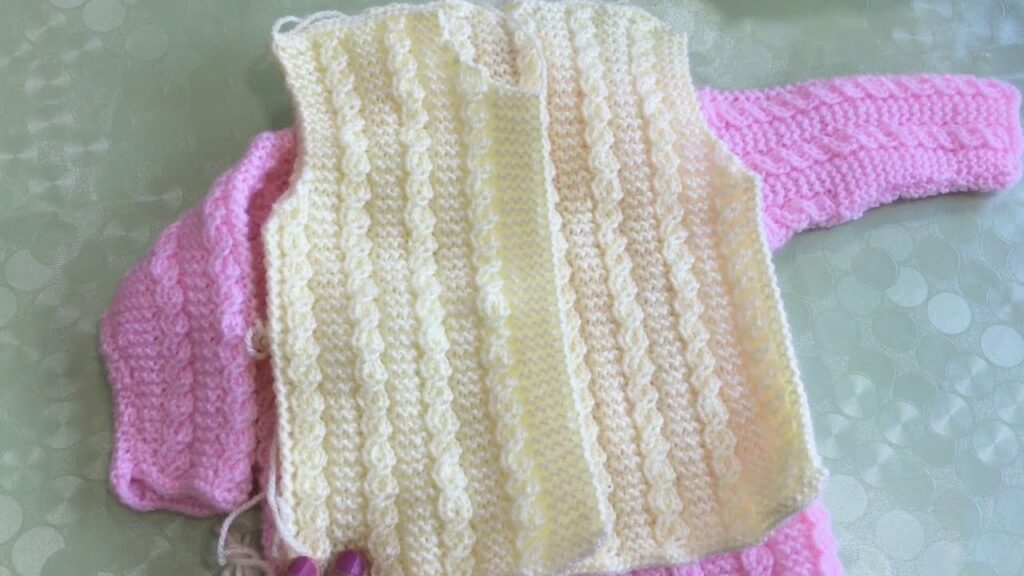
Common Construction Methods:
For a baby cardigan, seamless methods are often preferred for their comfort and neat finish.
- Top-Down Seamless (Raglan or Circular Yoke):
- How it Works: You cast on at the neckline (often incorporating stitches for the front button bands) and knit downwards. Increases are made along specific “raglan” lines (diagonal lines for raglan) or evenly around (for a circular yoke) to shape the shoulders and upper body. The body is then knit flat (to create the front opening), and the sleeves are knit last.
- Pros: No seaming (a huge advantage!), easy to try on for length adjustments, often quicker to finish. Button bands can be knit simultaneously with the body or picked up later.
- Cons: Requires circular needles (and often DPNs (Double Pointed Needles) or the Magic Loop method for the tiny sleeves).
- Highly Recommended: Many modern baby cardigan patterns use this method for its clean finish, seamless comfort, and ease of adjusting lengths.
- Bottom-Up (Seamed):
- How it Works: The back, two front panels, and two sleeves are knit as separate flat pieces. These pieces are then sewn together (seamed) at the shoulders, sides, and underarms. Button bands are typically picked up along the front edges and knit last.
- Pros: Can be knit on straight needles.
- Cons: Involves significant seaming, which can be time-consuming and requires careful execution for a neat finish.
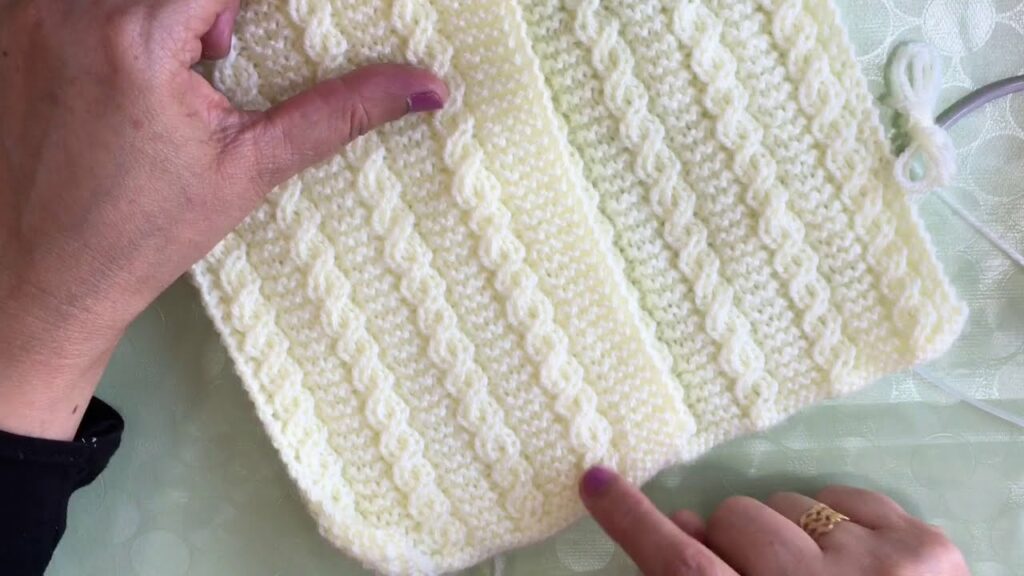
Basic Elements & Stitch Patterns:
A good pattern will guide you through these fundamental techniques:
- Cast On: How to begin your stitches (e.g., Long-Tail Cast On for a stretchy edge).
- Knit Stitch (K) & Purl Stitch (P): The two fundamental stitches.
- Ribbing (1×1 or 2×2): Alternating knits and purls for stretch and elasticity at cuffs, hems, neckbands, and button bands.
- Garter Stitch: Knit every row/round. Creates a very squishy, soft, reversible fabric that won’t curl. Excellent for comfortable textures or durable bands.
- Stockinette Stitch: Knit on one side, purl on the other. Creates a smooth, classic fabric (but curls at the edges unless bordered by non-curling stitches).
- Moss Stitch / Seed Stitch: A subtle, non-curling textured stitch that lies flat. Good for bands, collars, or the main body.
- Simple Shaping: Increases (e.g., KFB – knit front and back of stitch, M1 – make one) for raglan lines, and simple decreases (e.g., K2tog – knit two together, SSK – slip, slip, knit) for neck shaping or armholes (if seamed).
- Buttonholes: How to create neat horizontal or vertical buttonholes on the front band.
- Picking Up Stitches: For creating button bands along the front opening if they are not knit simultaneously.
- Bind Off: How to finish your stitches.
- Weaving in Ends: Making your finished work neat and tidy.
- Pattern Structure: A reliable pattern will clearly list materials, gauge, finished measurements, abbreviations, and step-by-step instructions for each section.
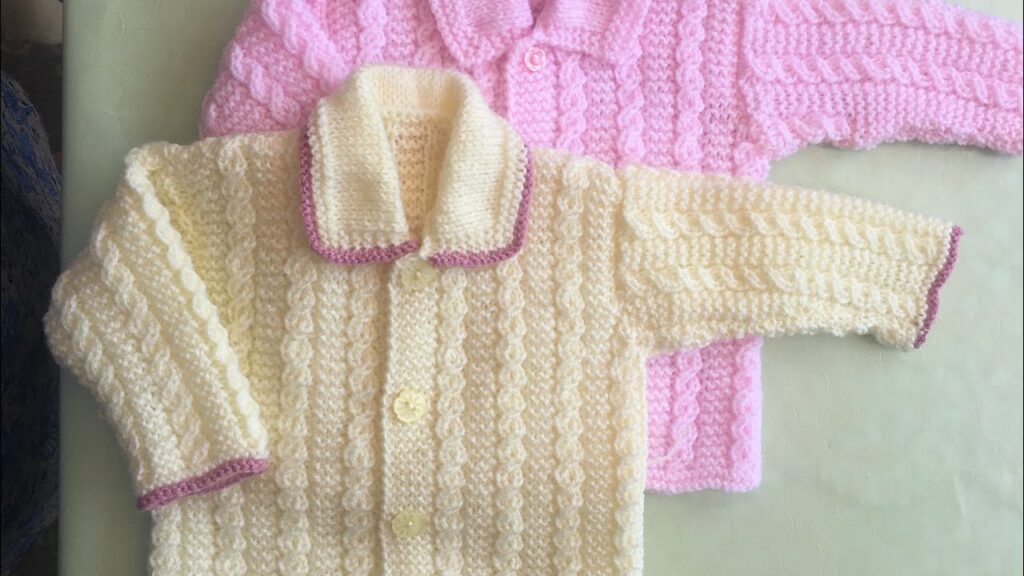
Key Design Elements for 0-3 Month Cardigans:
- Full Front Opening: This is essential for easy dressing of a newborn.
- Button Bands: These run along the front edges of the cardigan and hold the buttons and buttonholes. They are often knit in ribbing or garter stitch to lie flat and provide a neat finish.
- Neckline: Should be wide enough to easily slip over the baby’s head. Often finished with a simple ribbed or garter stitch band.
- Sleeves: Full-length for warmth, typically finished with ribbed cuffs.
- Hem: A simple ribbed or garter stitch hem at the bottom of the cardigan.
- Collar (Optional): Some patterns include a small, flat, knitted collar for added charm.
Step-by-Step (Simplified) Outline of a Top-Down Raglan Cardigan:
This is a general guide; your chosen pattern will provide exact stitch counts and specific instructions.
- Prepare: Gather your pattern, yarn, circular needles (and DPNs or a long circular for Magic Loop if knitting small circumference sleeves), stitch marker, tapestry needle, and scissors.
- Knit Your Gauge Swatch: This is the most important step for accurate sizing. Wash, block, and measure it. Adjust needle size if necessary.
- Cast On: Using a stretchy cast-on method (like the Long-Tail Cast On), cast on the specified number of stitches for the neckline. These stitches will often include those for the front button bands.
- Work Neckline/Front Bands: Work in ribbing (e.g., K1, P1) or garter stitch for the specified height of the neckband. This section will typically incorporate the first buttonhole(s) on one of the front bands.
- Switch to Main Needles: Change to your larger needles for the main body of the cardigan.
- Establish Raglan Markers: On the first round/row of the yoke, you’ll divide your stitches for the front bands, two front panels, two sleeves, and the back panel. Place stitch markers at the four “raglan” corners (where the increases will occur).
- Knit Yoke (Increase Rounds/Rows): Continue knitting in your main stitch pattern. On designated “increase rounds/rows,” you will work increases around each of your raglan markers. This gradually expands the fabric to form the shoulders and upper chest. Continue working buttonholes on your front band at regular intervals as per the pattern. Repeat until the yoke reaches the desired depth (usually just past the baby’s underarms).
- Separate for Body & Sleeves: Once the yoke is complete, put the stitches for the two sleeves onto scrap yarn or stitch holders. The remaining stitches for the front panels and back panel will be joined (often by casting on a few stitches under the armholes) to form the body of the cardigan.
- Knit Body: Continue knitting the body flat (to maintain the front opening) in your main stitch pattern until the cardigan reaches the desired length. Finish with a ribbed or garter stitch hem. Bind off all stitches.
- Knit Sleeves: Return to the held sleeve stitches. Pick up any stitches under the armholes (these were cast on when separating the body). Knit each sleeve in the round (using DPNs or Magic Loop) or flat (if the pattern instructs you to seam later) to the desired length. Finish with a ribbed cuff. Bind off.
- Finishing:
- Weave in Ends: Neatly weave in all loose yarn tails using a tapestry needle.
- Sew on Buttons: Securely sew on all buttons, ensuring they are very tightly attached and pose no hazard.
- Block: This is a crucial step! Gently wash your finished cardigan according to your yarn’s care instructions. Gently squeeze out excess water. Lay it flat on a towel or blocking mats, shaping it to the correct dimensions from the pattern. Let it air dry completely. Blocking truly transforms the garment, evening out stitches, setting the shape, and improving drape.
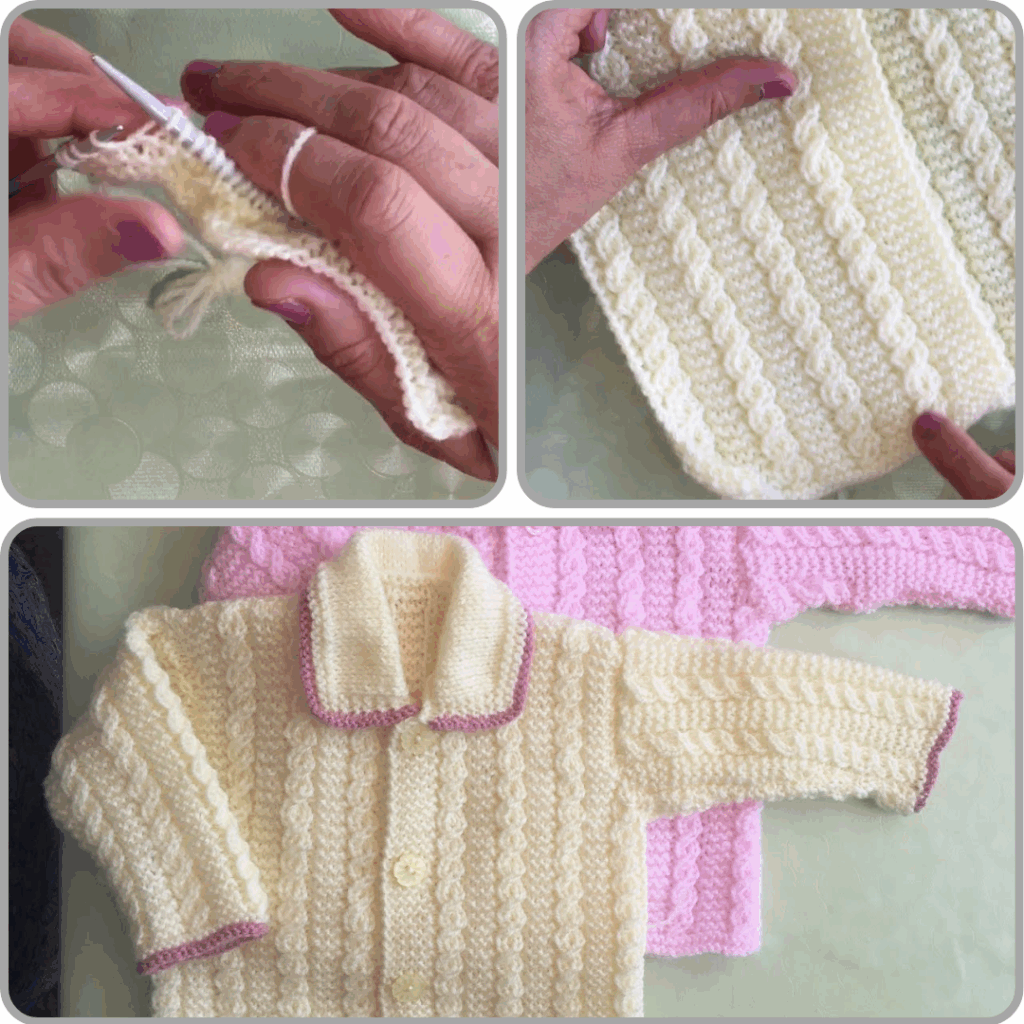
Tips for Beginner/Intermediate Success:
- Read the Entire Pattern First: Before casting on, read every word of your chosen pattern. This helps you understand the overall construction and anticipate any new techniques.
- Watch Video Tutorials: For any technique that’s new or unclear to you (e.g., specific cast-ons, increases, joining in the round, working buttonholes, Magic Loop, picking up stitches).
- Use Stitch Markers! They are invaluable for marking the beginning of the round, raglan lines, stitch pattern repeats, and buttonhole placements.
- Don’t Fear Mistakes: Everyone makes them! A good stitch fixer or a seam ripper is your friend. It’s always better to undo a few rows and correct an error than to be unhappy with the finished project.
- Baby Safety First: Double-check that all buttons are sewn on extremely securely. Avoid any long ties or very small, loose embellishments that could pose a choking hazard.
Knitting a baby cardigan for a 0-3 month old is a wonderfully fulfilling project. You’ll create a garment that is not only practical and adorable but also a tangible expression of your love and care, sure to be cherished by the little one and their family. Happy knitting!
Video tutorial:
